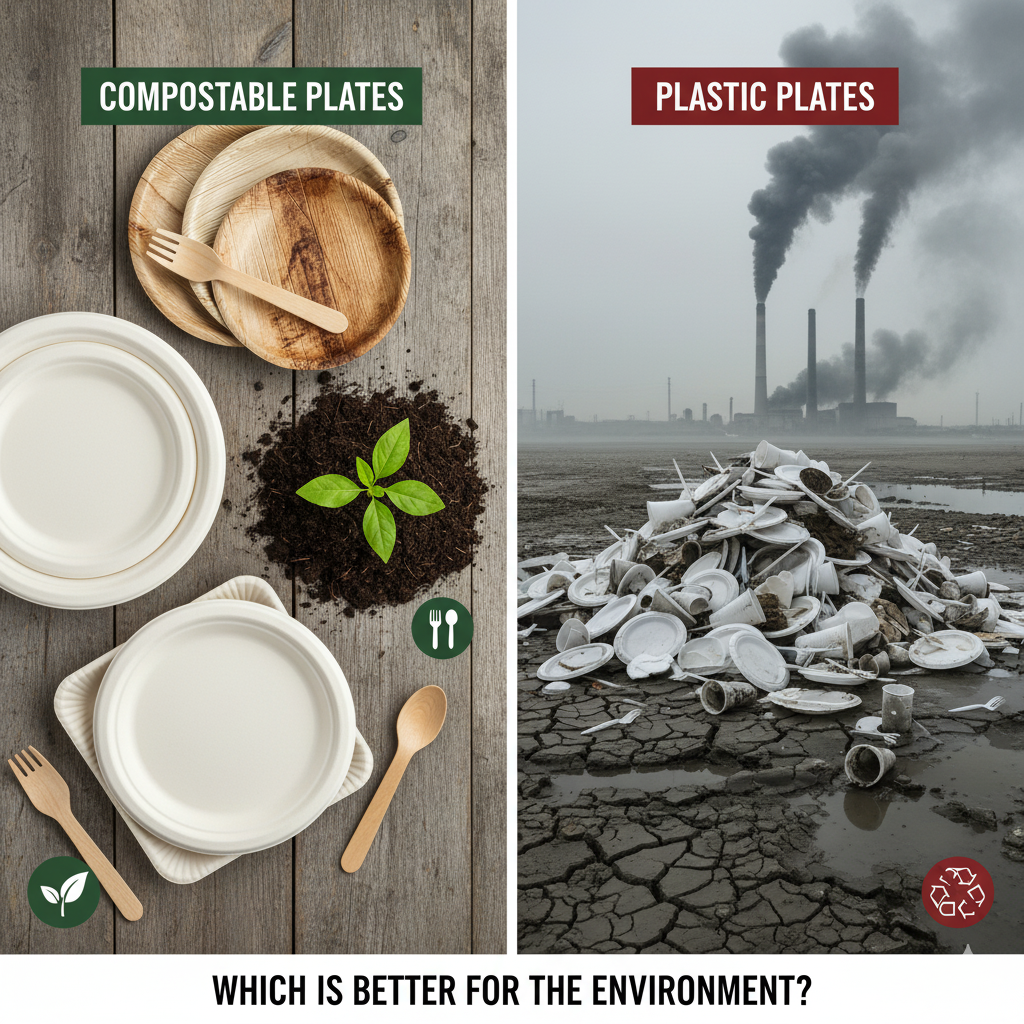
Compostable Plates vs Plastic Plates: Which is Better for the Environment?
Share
In today’s eco-conscious world, choosing the right type of tableware has never been more important. Restaurants, cafes, and households are increasingly asking: “Should I use compostable plates or stick to traditional plastic plates?” In this blog, we’ll explore the environmental impact, benefits, and drawbacks of both, helping you make an informed choice that supports sustainability.
What Are Plastic Plates?
Plastic plates are made from petroleum-based polymers and are widely used for their convenience and low cost. They are lightweight, durable, and easy to manufacture. However, their environmental footprint is significant:
- Non-biodegradable: Plastic can take hundreds of years to decompose in landfills.
- Pollution: Improper disposal leads to ocean pollution, harming marine life.
- Resource-intensive: Production relies heavily on fossil fuels.
What Are Compostable Plates?
Compostable plates are made from natural materials like sugarcane bagasse, cornstarch, bamboo, or palm leaves. Unlike plastic, these plates break down naturally in composting conditions.
- Biodegradable: Can decompose within months under proper conditions.
- Eco-friendly production: Made from renewable resources, not petroleum.
- Safe disposal: Can be added to home or industrial compost systems.
Environmental Comparison: Compostable vs Plastic Plates
| Feature | Plastic Plates | Compostable Plates |
|---|---|---|
| Material Source | Petroleum-based | Renewable natural materials |
| Decomposition | 400–500 years | 3–6 months (industrial compost) |
| Carbon Footprint | High | Lower |
| Recycling | Difficult, often downcycled | Can be composted into soil |
| Impact on Wildlife | High | Minimal |
Clearly, compostable plates outperform plastic plates in almost every environmental category.
Benefits of Switching to Compostable Plates
-
Reduce Landfill Waste
Compostable plates break down naturally, reducing the volume of long-lasting waste in landfills. -
Lower Carbon Footprint
Using renewable materials instead of fossil fuels decreases greenhouse gas emissions. -
Safe for Food and Environment
No harmful chemicals leach into food or soil, unlike some plastic plates. -
Brand Image for Businesses
Restaurants and cafes that adopt compostable plates gain credibility with eco-conscious customers.
Common Misconceptions About Compostable Plates
- “They are not durable.” Modern compostable plates are sturdy and heat-resistant, suitable for most meals.
- “They are expensive.” While slightly costlier than plastic, their environmental benefits outweigh the small price difference.
- “They can’t be used for outdoor events.” Compostable plates are perfect for picnics, parties, and large gatherings, and they leave no lasting waste.
How to Properly Dispose of Compostable Plates
- Home Composting: Break the plates into small pieces before adding them to your compost bin.
- Industrial Composting: Many cities now offer organic waste programs that accept compostable tableware.
- Avoid Landfill: Even though they are biodegradable, plates decompose fastest in composting conditions, not landfill.
Conclusion: Why Compostable Plates Are the Smarter Choice
Switching from plastic plates to compostable plates is a small change with a huge environmental impact. By using renewable materials, reducing landfill waste, and lowering your carbon footprint, you contribute to a cleaner, healthier planet. Whether you’re a business or hosting a family event, compostable plates are the eco-friendly choice that truly makes a difference.
Ready to Make the Switch?
Biogreen offers a wide range of compostable plates, bowls, cups, and utensils that are perfect for homes, cafes, and restaurants in Australia. Start reducing plastic waste today and embrace sustainable living.
